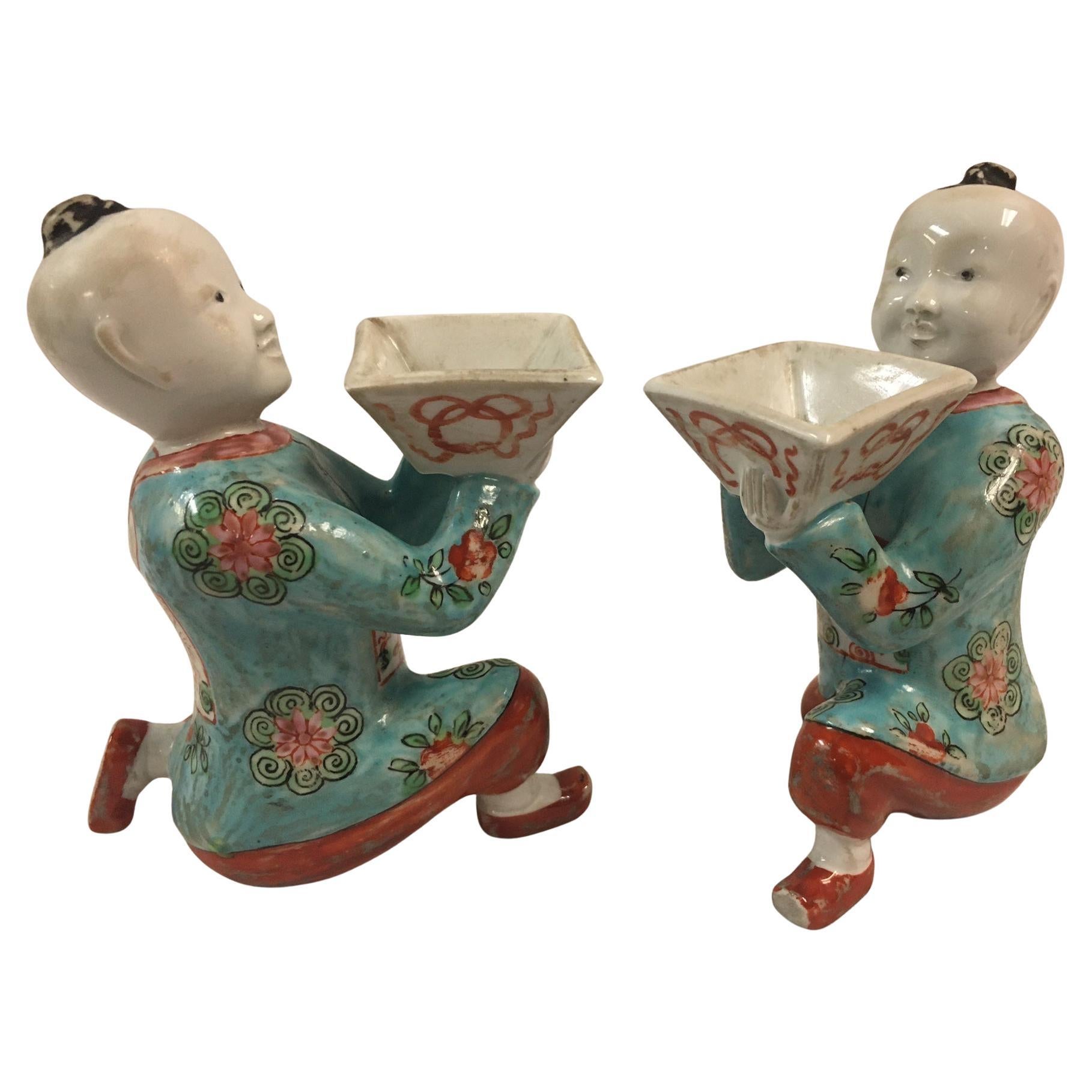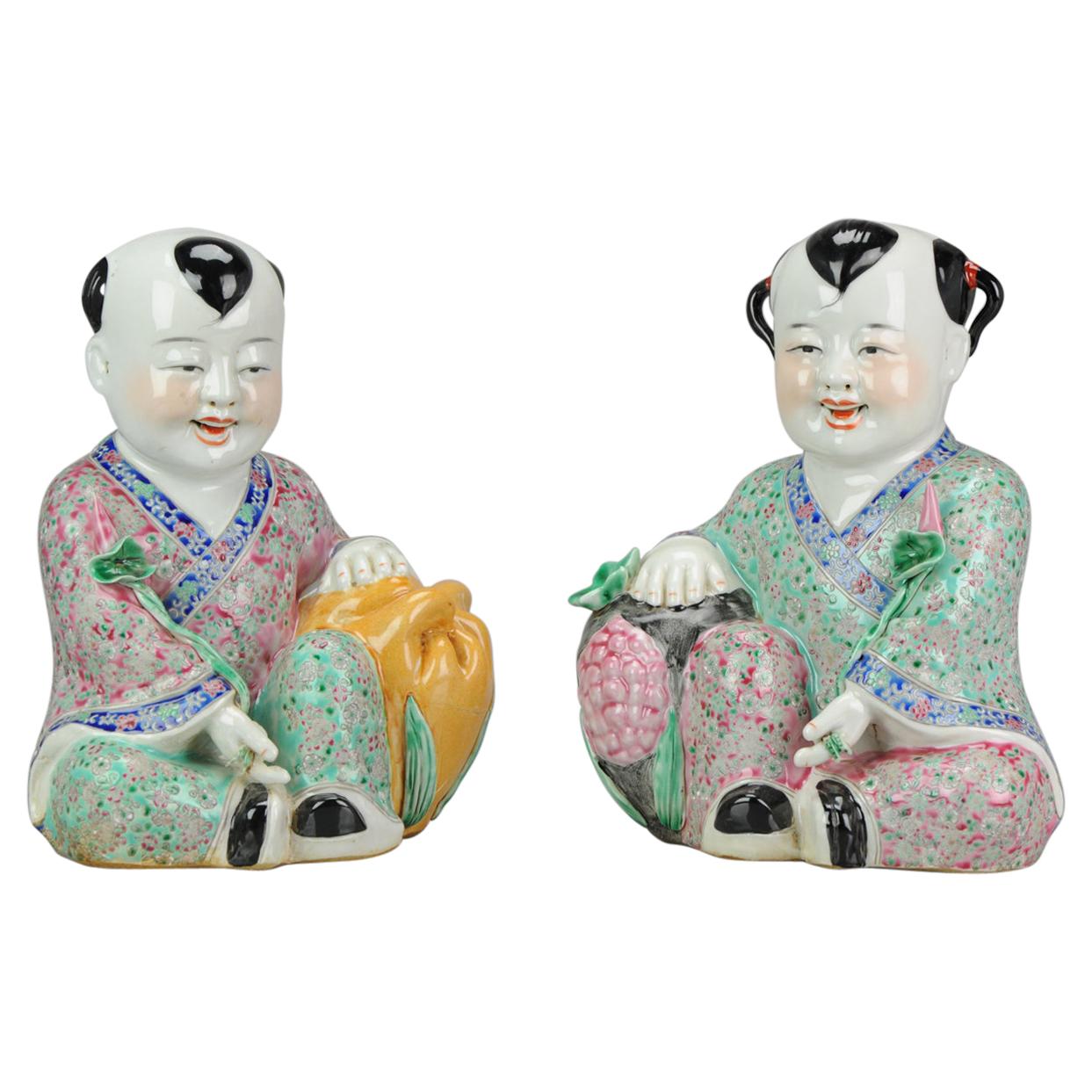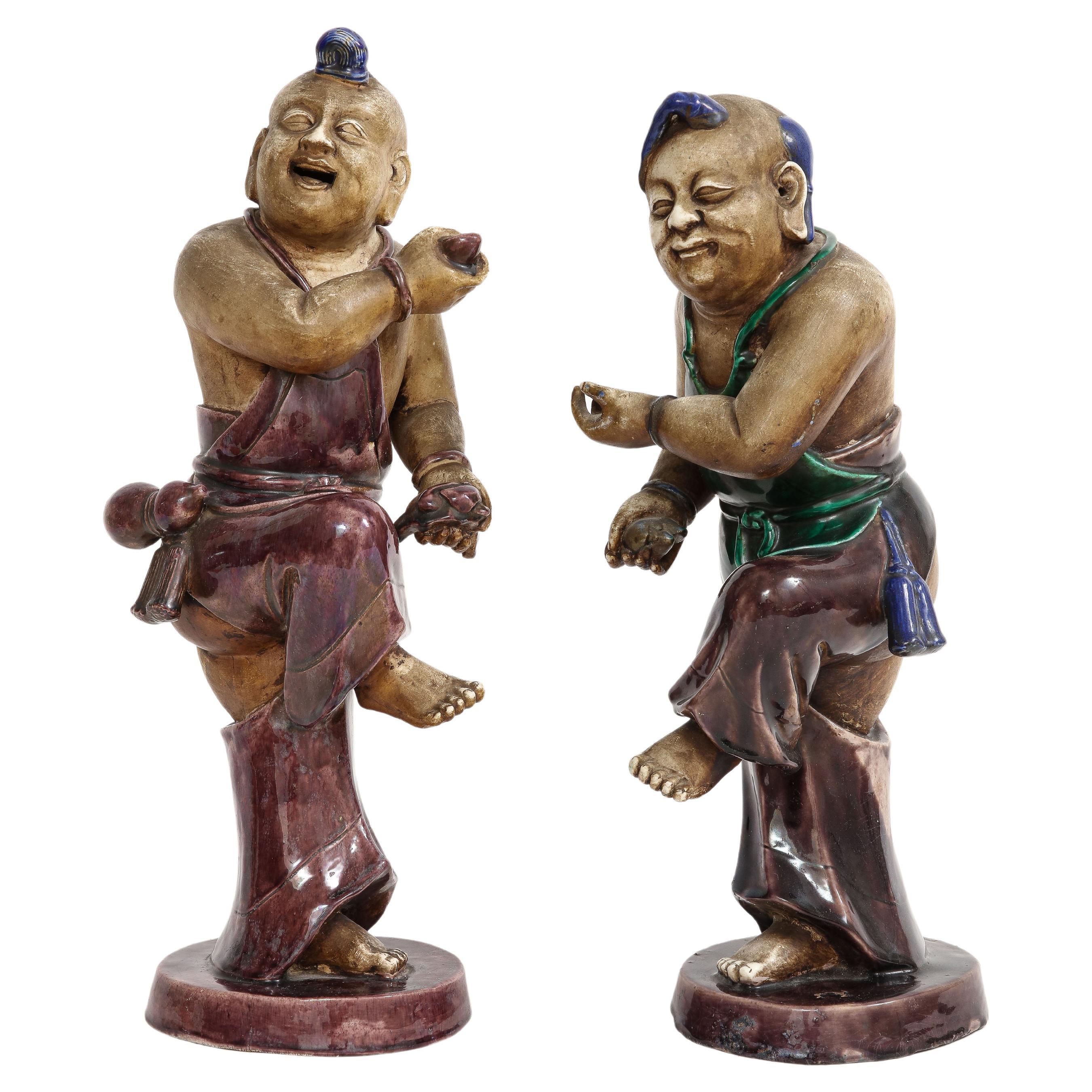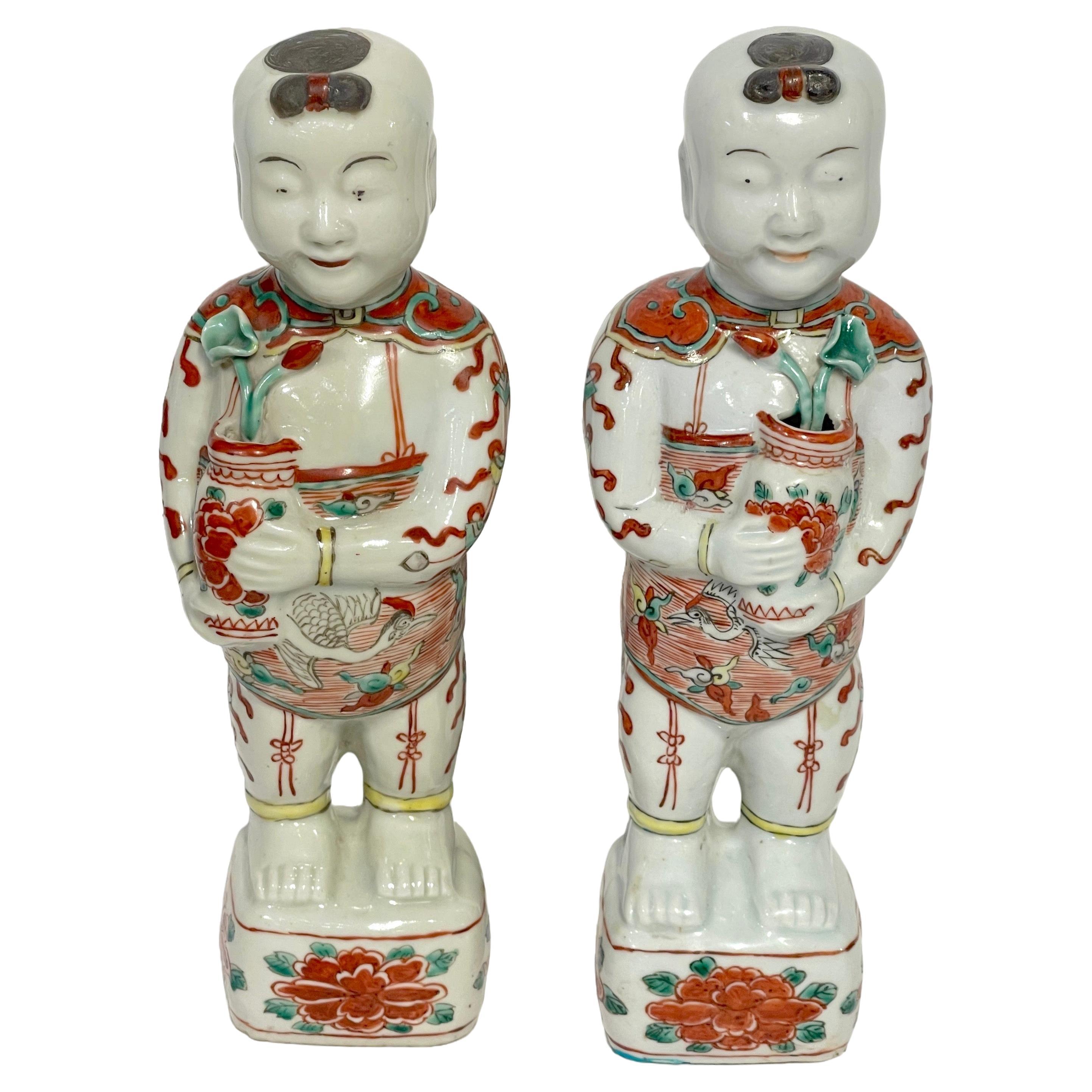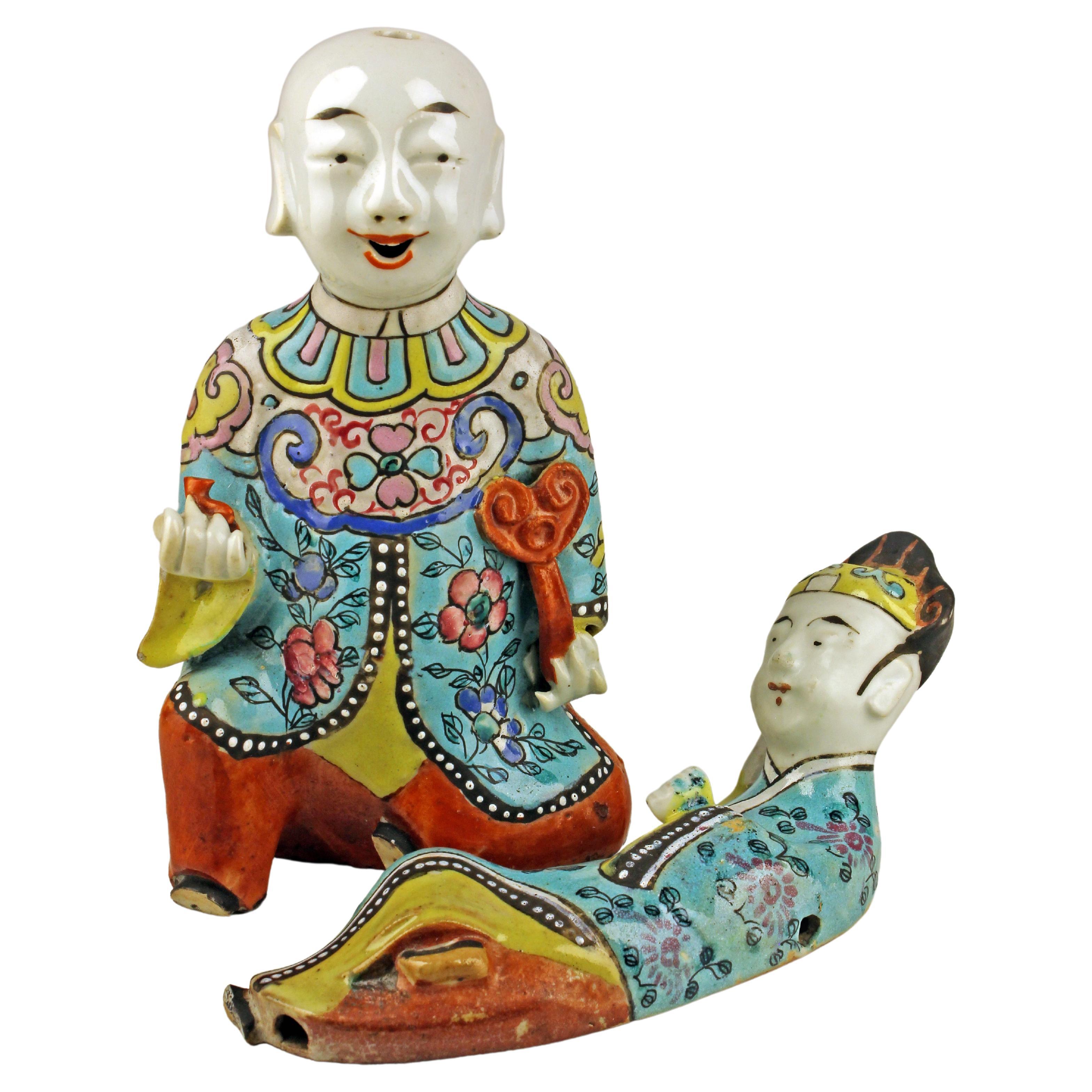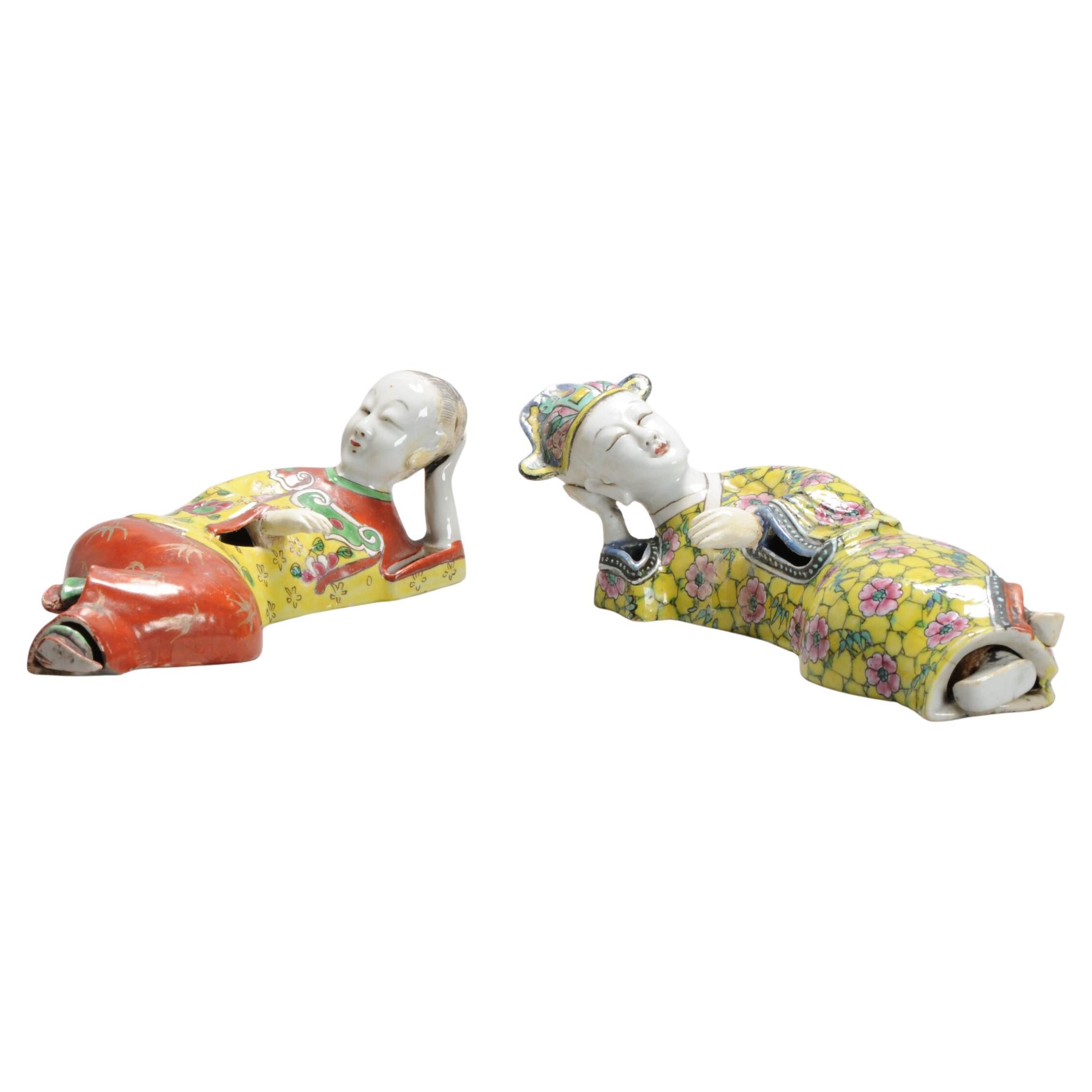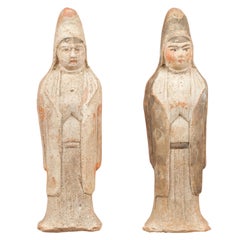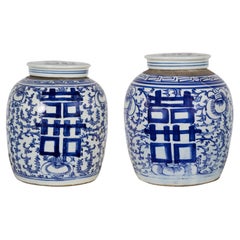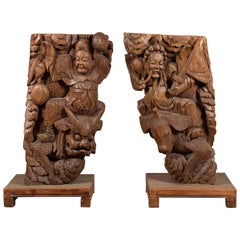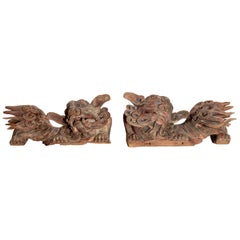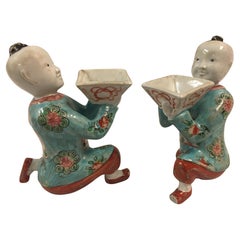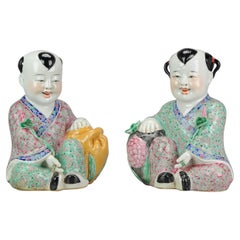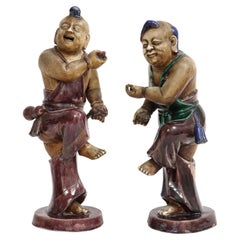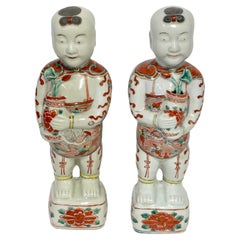Items Similar to Pair of Qing Dynasty Period Porcelain Tong'zi Pillows Depicting Kneeling Boys
Want more images or videos?
Request additional images or videos from the seller
1 of 14
Pair of Qing Dynasty Period Porcelain Tong'zi Pillows Depicting Kneeling Boys
$1,800per set
£1,384.68per set
€1,607.22per set
CA$2,538.43per set
A$2,843.47per set
CHF 1,493.49per set
MX$34,575.66per set
NOK 18,912.49per set
SEK 17,953.04per set
DKK 11,995.30per set
About the Item
A pair of Qing Dynasty period porcelain Tong'zi pillows from the 19th century, in the form of kneeling boys. These Qing Dynasty period porcelain Tong'zi pillows, crafted in the 19th century, are exquisite representations of kneeling boys, a testament to the period's intricate artistry and cultural significance. Each figure is meticulously modeled resting on their knees and elbows, their bald heads adorned with knots of black hair tied with vibrant red ribbons, adding a playful yet serene charm to their demeanor. Their attire, a beautifully detailed blue and yellow vest decorated with floral motifs and cinched at the waist with a red ribbon, along with gilded bracelets adorning their ankles, showcases the meticulous attention to detail and color mastery of Qing Dynasty artisans.
In a contemporary home, these unique porcelain pillows could serve as captivating accent pieces, bridging the gap between functional art and historical artifact. Ideal for display in a living room, study, or as part of a larger collection of Asian antiques, they invite curiosity and admiration. Their story and craftsmanship could spark conversations about Chinese history, art, and the intriguing use of ceramic pillows. Placed on a bookshelf, mantelpiece, or in a glass display case, they not only add an element of visual interest but also pay homage to the rich cultural heritage of the Qing Dynasty.
- Dimensions:Height: 7.5 in (19.05 cm)Width: 14 in (35.56 cm)Depth: 7 in (17.78 cm)
- Sold As:Set of 2
- Style:Qing (Of the Period)
- Materials and Techniques:
- Place of Origin:
- Period:
- Date of Manufacture:19th century
- Condition:Wear consistent with age and use. Please refer to the various additional photos for further condition detail and contact us with any questions!
- Seller Location:Yonkers, NY
- Reference Number:Seller: YN7888 / FEA Home1stDibs: LU863938896432
About the Seller
5.0
Platinum Seller
Premium sellers with a 4.7+ rating and 24-hour response times
Established in 1968
1stDibs seller since 2009
1,163 sales on 1stDibs
Typical response time: <1 hour
- ShippingRetrieving quote...Shipping from: Yonkers, NY
- Return Policy
Authenticity Guarantee
In the unlikely event there’s an issue with an item’s authenticity, contact us within 1 year for a full refund. DetailsMoney-Back Guarantee
If your item is not as described, is damaged in transit, or does not arrive, contact us within 7 days for a full refund. Details24-Hour Cancellation
You have a 24-hour grace period in which to reconsider your purchase, with no questions asked.Vetted Professional Sellers
Our world-class sellers must adhere to strict standards for service and quality, maintaining the integrity of our listings.Price-Match Guarantee
If you find that a seller listed the same item for a lower price elsewhere, we’ll match it.Trusted Global Delivery
Our best-in-class carrier network provides specialized shipping options worldwide, including custom delivery.More From This Seller
View AllPair of Qing Dynasty Early 20th Century Small Hand Painted Terracotta Statues
Located in Yonkers, NY
A pair of Qing dynasty 20th century terracotta Chinese hooded priestess sculptures with original paint. Discover the exquisite charm of this pair of 20th century Qing dynasty terraco...
Category
Early 20th Century Chinese Qing Sculptures and Carvings
Materials
Terracotta
Near Pair of White and Blue Porcelain Double Happiness Lidded Ginger Jars
Located in Yonkers, NY
A near pair of Chinese lidded blue and white porcelain ginger jars from the mid 20th century with double happiness signs on scrolling foliage. Emanating elegance and harmony, this ne...
Category
Mid-20th Century Chinese Ceramics
Materials
Porcelain
Pair of Qing 19th Century Hand Carved Wooden Temple Corbels with Warriors
Located in Yonkers, NY
A pair of Chinese Qing Dynasty hand carved temple corbels from the early 19th century, depicting warriors. Created in China during the early 19th centur...
Category
Antique 19th Century Chinese Qing Mounted Objects
Materials
Wood
Pair of Chinese 19th Century Hand Carved and Painted Temple Guardian Lions
Located in Yonkers, NY
A pair of Chinese sculpted and polychromed temple guardian lions architectural wood carvings. Born in China during the 18th or 19th century, each...
Category
Antique 19th Century Chinese Sculptures and Carvings
Materials
Wood
Vintage Pair of Floral Chinese Vases
Located in Yonkers, NY
A vintage pair of Chinese vases from the mid 20th century with floral cloisonné décor. Welcome to a symphony of color and craftsmanship, presented by this vintage pair of Chinese vas...
Category
Mid-20th Century Chinese Vases
Materials
Brass
$980 / set
Pair of Late Qing Dynasty Stands with Carved Aprons and Floral Bird Decor
Located in Yonkers, NY
A pair of late Qing Dynasty stands with painted floral and bird decor and carved aprons. This pair of antique late Qing Dynasty stands, from the early 20th century, captivates with i...
Category
Early 20th Century Chinese Qing Pedestals
Materials
Wood
You May Also Like
Pair of Porcelain Kneeling Chinese Boys Holding Shallow Single Blossom Vessels
Located in Savannah, GA
This whimsical pair of porcelain figures depict kneeling Chinese boys holding square containers suitable for single blossoms. The symmetry is graceful from all angles and the color p...
Category
Antique 1880s Chinese Chinese Export Ceramics
Materials
Porcelain
Statues China 1940/50 He-He Twins Marked on Base Chinese Porcelain Proc/Minguo
Located in Amsterdam, Noord Holland
A very nicely decorated pair of statues
He-he Heavenly twins
The Heavenly twins are shown as two boys carrying a box and a lotus which symbolizes a wish for peace: 'hé' ? (box)...
Category
Early 20th Century Chinese Qing Ceramics
Materials
Porcelain
$1,211 Sale Price
20% Off
A Rare Pair Chinese Kangxi Biscuit Porcelain Figures of Boy w/ Enamel Decoration
Located in New York, NY
A Rare Pair of Chinese Kangxi 18th Century (1710) Biscuit Porcelain Figures of Boy with Enamel Decoration. These captivating figures, seemingly caught in the midst of a joyous dance...
Category
Antique 1710s Chinese Chinese Export Ceramics
Materials
Porcelain
Pair of Chinese Export Famille Verte Figures of the Hehe Erxian Twins
Located in West Palm Beach, FL
Pair of Chinese Export Famille Verte Figures of the Hehe Erxian Twins
19th Century or Older
Embrace the allure of Chinese porcelain with this fine Pair of Chinese Export Famille Ve...
Category
Antique 19th Century Chinese Chinese Export Ceramics
Materials
Porcelain
$2,240 Sale Price / set
20% Off
Pair of Mid-19th Century/Qing Dinasty of Enameled Chinese Porcelain Figurines
Located in North Miami, FL
Pair of Mid-19th century/Qing dinasty enameled chinese porcelain figurines depicting a laughing boy kneeling and another lying down
By: unknown
Material...
Category
Antique Mid-19th Century Chinese Qing Ceramics
Materials
Enamel
Pair of Antique Chinese Statue Porcelain Wall Pocket Vase Figures, 18th Century
Located in Amsterdam, Noord Holland
A very lovely pair of high quality. Made to hang on the wall or lay down on a surface. Lovely craftmanship. Qianlong/Jiaqing period.
Both pieces have 1 foot that can move, really co...
Category
Antique 18th Century Chinese Qing Figurative Sculptures
Materials
Porcelain
More Ways To Browse
Antique Kneeler
Asian Display Case
Ceramic Pillow
Chinese Ceramic Pillow
Qing Dynasty Pillow
Chinese Porcelain Pillow
Vest Ceramics
Antique Chinese Ceramic Pillows
Meiji Period Bowl
Showa Japanese Porcelain
Korea Ring
Blue Rose Famille
Edo Imari
17th Century Porcelain Marks
Antique Joseon
Edo Imari Porcelain
Famille Rose Bird
Ming Dynasty Furniture 16th Century
